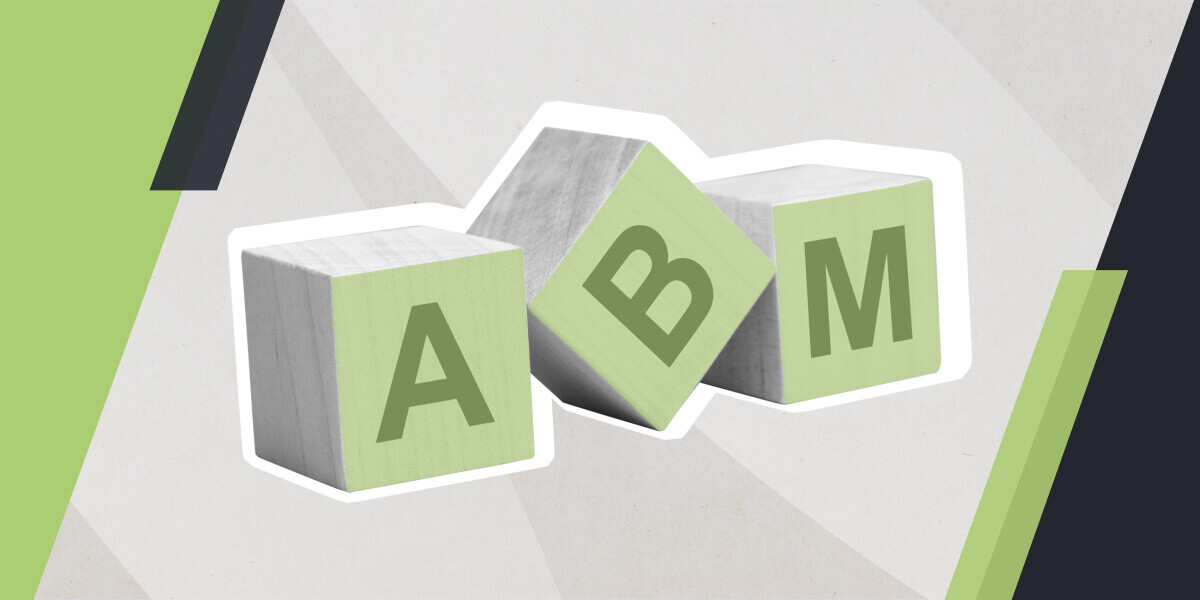
The internet has liberated the consumer from the clutches of the salesperson. In every sector the balance of power has shifted, buyers are equipped with market intelligence garnered from a thousand sources. They don’t need to listen to your sales pitch anymore to make their choice. And what’s more, they don’t want to. Good. It was exhausting. I mean, have you watched Glengarry Glen Ross?
"Only one thing counts in this life: Get them to sign on the line which is dotted."
In the 1992 film Glengarry Glen Ross Alec Baldwin plays the odious sales manager, Blake. He threatens and swears, he fires people on the spot, he even denies his team coffee until they make a sale. I know.
In one scene he outlines his notion of the ideal buyers’ journey. Actually, for him, it’s the only possible journey. For Blake, there are four stages by which a prospect becomes a customer. And the progress and success of this journey is determined entirely by the salesperson’s ability to browbeat. He calls it A.I.D.A. and it goes like this: Make sure you have their ATTENTION, lock in their INTEREST, trigger their DECISION, make them take ACTION.
Everyone, Blake says, who walks on to ‘your lot’ wants to buy something - that’s why they’re there. Your job is to take their money.
“Are you man enough to take it?”, he asks his washed-up team - to resounding silence.
Always be closing?
Well, as I say, that does sound exhausting.
And more importantly, as a sales philosophy, a huge waste of time, effort and resource. In a B2B sales scenario, it’s practically a recipe for disaster.
You don’t want to sell to everyone all the time. You haven’t got the right product for everyone, for a start. Neither, for that matter, have you got the expertise to serve everyone well and sell more to them further down the line. To build a sustainable sales pipeline you need to identify your target audience with precision and focus your attention on meeting their needs. You need to understand and nurture their engagement in ways that organically draw them to you and help their decision-making as buyers. This includes the content you produce for them and the way you consult with them. You want them to be actively coming to you for advice as part of the sales process - not refusing to answer your calls.
If you do all this, there will be alignment between sales and marketing, you'll only be closing the ‘right fit’ buyers, and your life won’t be such an almighty struggle.
That’s where inbound sales comes in. It is focused on defining, attracting and nurturing the best fit leads for your business - ensuring they have the extraordinary experiences that convince them of your expertise and the suitability of your solution for their company.
So, what's the role of the salesperson in the inbound world? And will you be entitled to coffee? Here are 6 concepts it's critical to understand if you want to make a success of an inbound approach:
1.Understand the four steps of the inbound sales process
The inbound sales team doesn’t hit everyone who walks through the door or finds themselves on their website. Instead the inbound sales function is involved in a continuous process of identification, targeted engagement and consultation as the buyer moves from stranger, to lead, to opportunity and finally customer.
In a sales cycle powered by a central digital hub, this process is facilitated by a mix of automated, personalised and one to one contacts. Interactions are designed to further qualify prospects and support leads as they make their various buying decisions.
- Identify: In the awareness stage, the sales function helps identify the criteria for establishing MQLs (Marketing Qualified Leads), and the programme of communications that can establish their needs more clearly - and eventually convert them to SQLs
- Connect: In this phase, better and more personalised content is delivered to the prospect in a virtuous circle of education and engagement. The business connects with the lead across the platforms and channels that they value and respond to most. More data is gathered about their needs, wants and aspirations.
- Explore: When an inbound sales pro eventually connects one-to-one with a prospect, they have enough information to help them explore their options in detail. They ask relevant and informed questions. They listen and adapt to 'follow' the conversation and build more trust. They are tuned into discovering the prospects’ real intent and ascertaining if their solution is a good fit. On the back of this, sales opportunities can be identified.
- Advise: The sales person is now a trusted figure based on all the prospect's previous interactions with them and the company. They are offering the best advice based on the challenges, circumstance and needs of each contact. With such synchronicity between prospect and salesperson, ‘better fit’ and higher quality deals get closed with more confidence on both sides.
2. Differentiate between your Ideal Buyer Profile and your Buyer Personas
Buyer personas are great. They give you the detail you need to build pieces of content and tailor sales approaches that speak to potential clients in a voice they recognise and identify with. But chasing buyer personas without reference to the broader commercial context they operate in, can be a mistake. The Inbound sales methodology pursuit of ‘right fit' customers, needs to take into account the ideal buyer profile, too.
Put simply, the Buyer Persona is the individual person within a company that you’re targeting, while the Buyer Profile is the type of company you’re targeting.
The buyer profile, then, takes into account the ‘firmographics’; the size, shape and structural profile of your ideal target organisation. The organisations who are likely to be in need of your products - and who you will be able to service effectively.
Ensuring your team create content that targets and speaks to prospects at the right organisational level will help you avoid mis-selling, and save you wasted time and energy in the long run.
3.Understand your buyers’ journey
Believe it or not, this sale is not about you. It’s about your customer. Understanding their buyer’s journey, the steps they take to address their business problems, and the resources they use to research and choose solutions, will be key to winning their trust and their custom. It will be key to being present to help at the right time and in the right place for them.
Defining your sales process before you understand that buyer’s journey, risks putting you further out of step with your customer, when you should be searching for closer alignment.
The inbound sales strategy seeks to integrate a sales process into the sequence of steps that a customer takes as they move towards a buying decision.
The inbound strategy ensures you are ‘present’ and helping companies through publishing content relevant to their business on their favoured channels, even before they know they’ve got a need for your product.
Your presence as a familiar resource in their professional lives, paves the way for further engagement when they may be searching for detailed information about potential solutions. Your sales process should ensure you ‘turn up’ for potential customers at exactly the right time, via the channels - and in the formats - they will find most valuable throughout their buying cycle.
4.Reimagine the salesperson as adviser
The internet has stolen your thunder. Customers can find out practically everything about your product from the features, benefits and product specs listed on your website. Not to mention the online reviews - good, bad and indifferent which are only a Google search away.
So, the salesperson really now needs to operate as a trusted adviser for their client, rather than just a source of help and information about their own offering.
They need to be the person whom the client calls when they need help with the brief or understanding a competitors’ offering. As a trusted source of support, the salesperson should be there to help the customer think critically about what they need; to talk with authority about the industry and dispassionately about the sales options open to their customers.
This kind of consultative selling brings a natural authority with helps customers navigate complex buying processes more effectively. It breeds confidence in you as the partner who will tell it like it is.
5.Remember, you don’t always need to pitch
You know the type... laptop poised, coiled and ready to pounce with their cred deck and generic sales presentation at the slightest provocation… The old school salesmen (and it was always invariably men) who were always there and ready to sell at a moment’s notice.
But the inbound sales methodology sees buyer interest as an opportunity to learn and teach rather than pitch and sell.
The inbound professional seeks to explore the challenges of their prospects, the goals they need to achieve, their current plans, their ideal timings - before they start presenting to them. This makes for better, more tailored pitches that reflect the unique needs, aspirations and business problems of those who you are speaking to.
6. Always be… helping
So, not every connection with a prospect is about selling.
Understanding more about where your customer is in their buying cycle, understanding the context of each enquiry or visit to your site - all this is crucial and can be a goal in itself.
Using the opportunity of each interaction to teach, to share knowledge and learn something new about your customer in return - can bring more rewards than simply the opportunity to tell them stuff about your products.
The aspiration to help and advise - and the way you achieve this through content and personal engagement - is key to demonstrating your authority in the sector and your potential as a partner.
Everything you do from the simplest blog post, to the how-to-guide, to the webinar, podcast or the personalised, free consultation, is framing your value in the eyes of your potential client.
All this is not to say that you don’t need a bit of old fashioned sales psychology underpinning your tactics when you’re down to the wire - HubSpot have created this very useful guide to closing deals that takes in both the old and some new techniques to up your hit rate.
But thankfully, digital disruption and a thirst for a more sustainable approach, has replaced the 1980s Real Estate paradigm, and led to the more thoughtful and productive inbound sales methodology.
And it’s yours to take, mould and sculpt, as you build the sales processes that aligns with your buyers unique customer journeys.
And just to be clear. Coffee is not just for closers, anymore.




